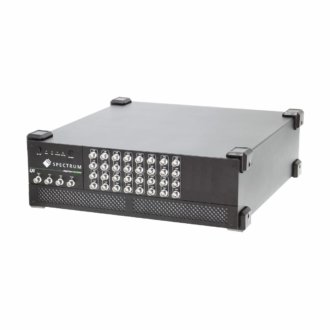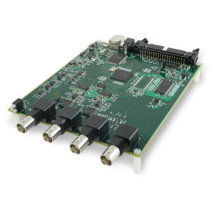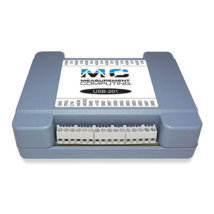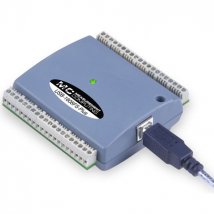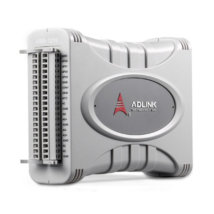| DN6.491-24 | Numériseur LXI polyvalent 16 bits 24 voies 10 Me/s de vitesse d'échantillonnage | |
| DN6.491-32 | Numériseur LXI polyvalent 16 bits 32 voies 10 Me/s de vitesse d'échantillonnage | |
| DN6.491-40 | Numériseur LXI polyvalent 16 bits 40 voies 10 Me/s de vitesse d'échantillonnage | |
| DN6.491-48 | Numériseur LXI polyvalent 16 bits 48 voies 10 Me/s de vitesse d'échantillonnage | |
| DN6.496-24 | Numériseur LXI polyvalent 16 bits 24 voies 30 Me/s ou 12 voies 60 Me/s de vitesse d'échantillonnage | |
| DN6.496-32 | Numériseur LXI polyvalent 16 bits 32 voies 30 Me/s ou 16 voies 60 Me/s de vitesse d'échantillonnage | |
| DN6.496-40 | Numériseur LXI polyvalent 16 bits 40 voies 30 Me/s ou 20 voies 60 Me/s de vitesse d'échantillonnage | |
| DN6.496-48 | Numériseur LXI polyvalent 16 bits 48 voies 30 Me/s ou 24 voies 60 Me/s de vitesse d'échantillonnage |
Série NETBOX DN6.49x - Numériseur LXI polyvalent 16 bits 24/32/40/48 voies 10 Me/s, 30 Me/s ou 60 Me/s de vitesse d'échantillonnage
- 10 Me/s 30 Me/s ou 60 Me/s sur 24/32/40/48 canaux
- entrées simples ou entrées différentielles
- Entrées monophasées ou différentielles par logiciel
- Un ADC 16 bits séparé et un amplificateur par canal
- Échantillonnage simultané sur tous les canaux
- 6 plages d’entrée: +/- 200 mV jusqu’à +/- 10
- Décalage d’entrée programmable de +/- 100%
- Fenêtre, largeur d’impulsion, réarmement, pointe, déclencheur OR / AND
- Entrées différentielles unidirectionnelles / véritables
- Circuit d’étalonnage complet intégré
- Instrument compatible GBit Ethernet / LXI
- Connexion facile avec les connexions BNC / SMA
- SBench 6 Professional inclus
- Accès direct à distance depuis les postes de travail ou les ordinateurs portables
- Intégration simple dans le LAN d’usine
Le numériseur NETBOX DN6.49x permet d’enregistrer jusqu’à 48 canaux synchrones avec des fréquences d’échantillonnage de 10 Me/s jusqu’à 60 Me/s. Ces produits offrent des fonctionnalités A/D exceptionnelles à la fois en résolution et en vitesse comme instrument à distance. Le puissant amplificateur A/D offre 6 plages d’entrée différentes, un décalage programmable et une commutation logicielle entre un seul canal (nombre total de canaux d’entrée) et un différentiel réel (demi-nombre de canaux d’entrée)
Le digitizerNETBOX et le generatorNETBOX offrent une puissante connexion Ethernet GBit et sont entièrement compatible LXI. La netbox peut être utilisée comme instrument de table ou pour montage en rack de 19 « , elle peut être connectée n’importe où dans votre réseau local ou directement point à point avec votre ordinateur portable / poste de travail. La première acquisition de données peut être effectuée en quelques minutes: connecter la puissance + ethernet + signaux, swicth sur, installer le logiciel sur PC client, détecter le digitizerNETBOX / generatorNETBOX avec Discovery, démarrer SBench 6, faire la première acquisition
ABA Mode
The optional ABA mode combines slow continuous data recording with fast acquisition on trigger events. The ABA mode works like a slow data logger combined with a fast digitizer. The exact position of the trigger events is stored as timestamps in an extra memory.
The ring buffer mode is the standard mode of all acquisition boards. Data is written in a ring memory of the board until a trigger event is detected. After the event the posttrigger values are recorded. Because of this continuously recording into a ring buffer there are also samples prior to the trigger event visible: Pretrigger = Memsize – Posttrigger.
The FIFO mode is designed for continuous data transfer between the digitizerNETBOX and the host PC. The transfer speed is depending on the Ethernet connection between box and host and is in the region of 40 MB/s to 60 MB/s. The control of the data stream is done automatically by the driver on interrupt request. The complete installed on-board memory is used for buffer data, making the continuous streaming extremely reliable.
Using a dedicated connector a sampling clock can be fed in from an external system. It’s also possible to output the internally used sampling clock to synchronize external equipment to this clock.
The option to use a precise external reference clock (normally 10 MHz) is necessary to synchronize the board for high-quality measurements with external equipment (like a signal source). It’s also possible to enhance the quality of the sampling clock in this way. The driver automatically generates the requested sampling clock from the fed in reference clock.
The internal sampling clock of the card is generated using a high precision PLL. This powerful device allows to select the sampling rate with a fine step size making it possible to perfectly adopt to different measurement tasks. Most other cards on the market only allow the setup of fixed sampling rates like 100 MS/s, 50 MS/s, 25 MS/s, 10 MS/s, … without any possibility to set the sampling rate to any value in between.
The on-board calibration can be run on user request and calibrates the amplifier against a dedicated internal high precision calibration source. After this calibration data is stored permanently in an on-board EEPROM and is automatically used for further acquisitions.
The analog inputs can be adapted to real world signals using individual settings for each channel. A large number of different input ranges and a programmable input offset allow to adopt perfectly to the real world signals.
All acquisition cards from Spectrum are built with a completely synchronous design. Every channel has its own independent input amplifier as well as an independent ADC allowing to program all input channel related settings individually for each channel.
With a simple software command the inputs can individually be switched from single-ended (in relation to ground) to differential, without loosing any inputs. When the inputs are used in differential mode the A/D converter measures the difference between two lines with relation to system ground.
Most of the Spectrum A/D cards offer a user programmable signal offset opening the Spectrum boards to a wide variety of setups. The signal offset at least covers a range of +/-100 % of the currently selected input range making unipolar measurements with the card possible. Besides this the input range offset can be programmed individually allowing a perfect match of the A/D card section to the real world signal.

